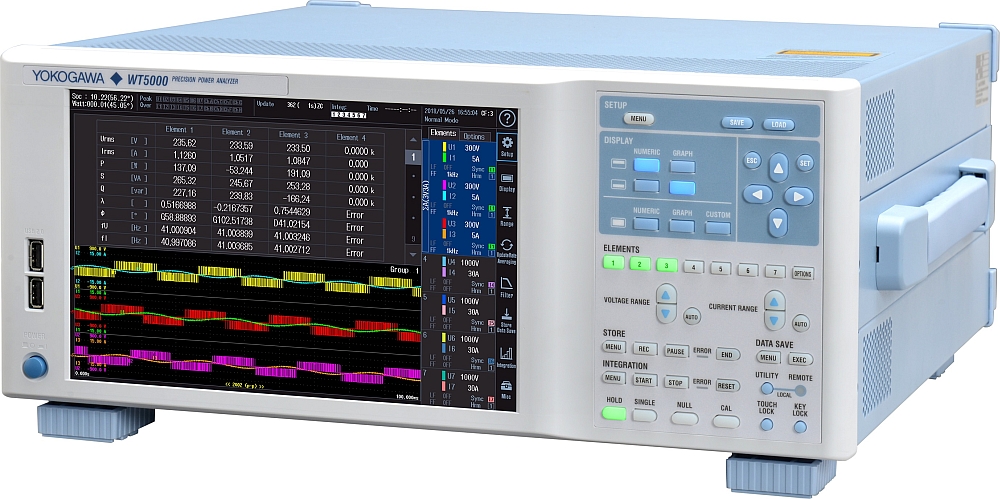- Yokogawa announces the WT5000 electrical power analyzer with an accuracy of ± 0.03%.
- This analyzer can accommodate seven input modules adapting it to the specific requirements of an application.
- It is intended in particular for applications involving the analysis of the power, efficiency and energy performance of on-board systems in electric vehicles, renewable energy production equipment and other devices aimed at reducing energy consumption.
To achieve an accuracy of ±0.03% at 50/60 Hz, the Yokogawa WT5000 analyzer operates an 18-bit analog-to-digital conversion system that samples signals at a rate of 10MS/s. According to its Japanese manufacturer, it has an acquisition rate 50 times higher and a resolution four times higher than its WT3000E model.
The WT5000, with a 10.1″ WXGA touch screen and 2GB to 32GB of on-board memory, is integrated into a housing of the same dimensions as the WT1800E models with 0.1% accuracy and the WT3000E with 0.04% accuracy. Modular in design, it can accommodate seven user-exchangeable input modules on the back of the device. One module has an input current range from 5mA to 5A and a second module from 0.5A to 30A. A single analyzer can therefore be used for applications that previously required the synchronization of several instruments independently. Four analyzers can also be interconnected (one master and three slaves).

The options /MTR1 and /MTR2 allow to characterize with a single instrument up to four electric motors simultaneously. These options allow the connection of four signals A, B, C and Z to perform measurements on each phase of a motor. The motor evaluation function allows to go beyond the measurement of electrical parameters: direction and speed, synchronous speed, slip, torque, mechanical power, electrical angle and motor efficiency from analog or pulse signals from torque or rotation sensors. Up to two motors can be measured by the WT5000 to determine the direction of rotation and electrical angle. Through a setting in the configuration menu, the WT5000 can perform synchronous measurements of up to four torque and rotation sensors to determine the effectiveness of four-wheel vehicle drive systems.
The WT5000 analyzer offers harmonic calculation capabilities and advanced filtering functions. By accepting up to seven inputs, it is possible to conduct multi-system measurements such as harmonic analysis of three-phase systems. Two harmonic analyses can be performed simultaneously, each up to 500th rank with fundamental frequencies up to 300kHz. This makes it possible, for example, to evaluate the impact of the switching frequency at the inverter output on the motor’s rotational speed and on its control.
Applications requiring high-current measurement, such as tests on electric vehicles and solar installations, require the use of external current collectors. To do this, the WT5000 analyzer integrates, as standard, an external current sensor input on the 30A input modules as well as on the 5A modules. For higher current levels (up to 2000A RMS), specific current sensors are available.
# Overview of the features of the Yokogawa WT5000 analyzer:
- From 44 Hz to 66 Hz: ±(0.01% of reading + 0.02% of range)
- DC: ±(0.02% of reading + 0.05% of range)
- Analog-to-digital conversion : 18-bit resolution, 10 MS/s
- Power frequency range: 5 MHz
- Harmonic up to the 500th order
- Voltage: up to 1500 VDC and 1100 VAC
- 10.1-inch WXGA touchscreen display
- Standard 2GB memory expandable to 32GB
- Communication interfaces: GPIB, Ethernet, VGA, USB 3.0, USB Peripheral






